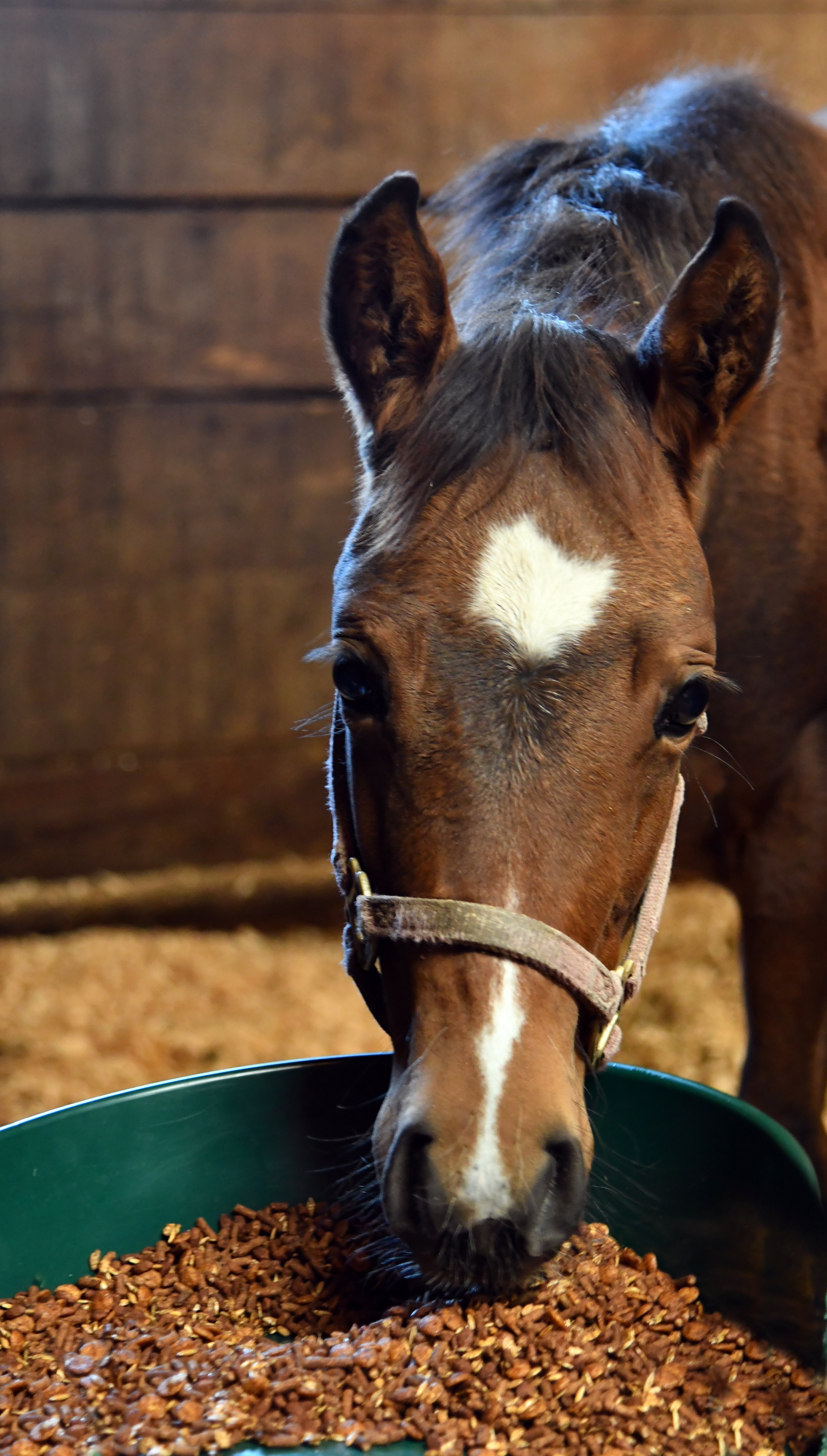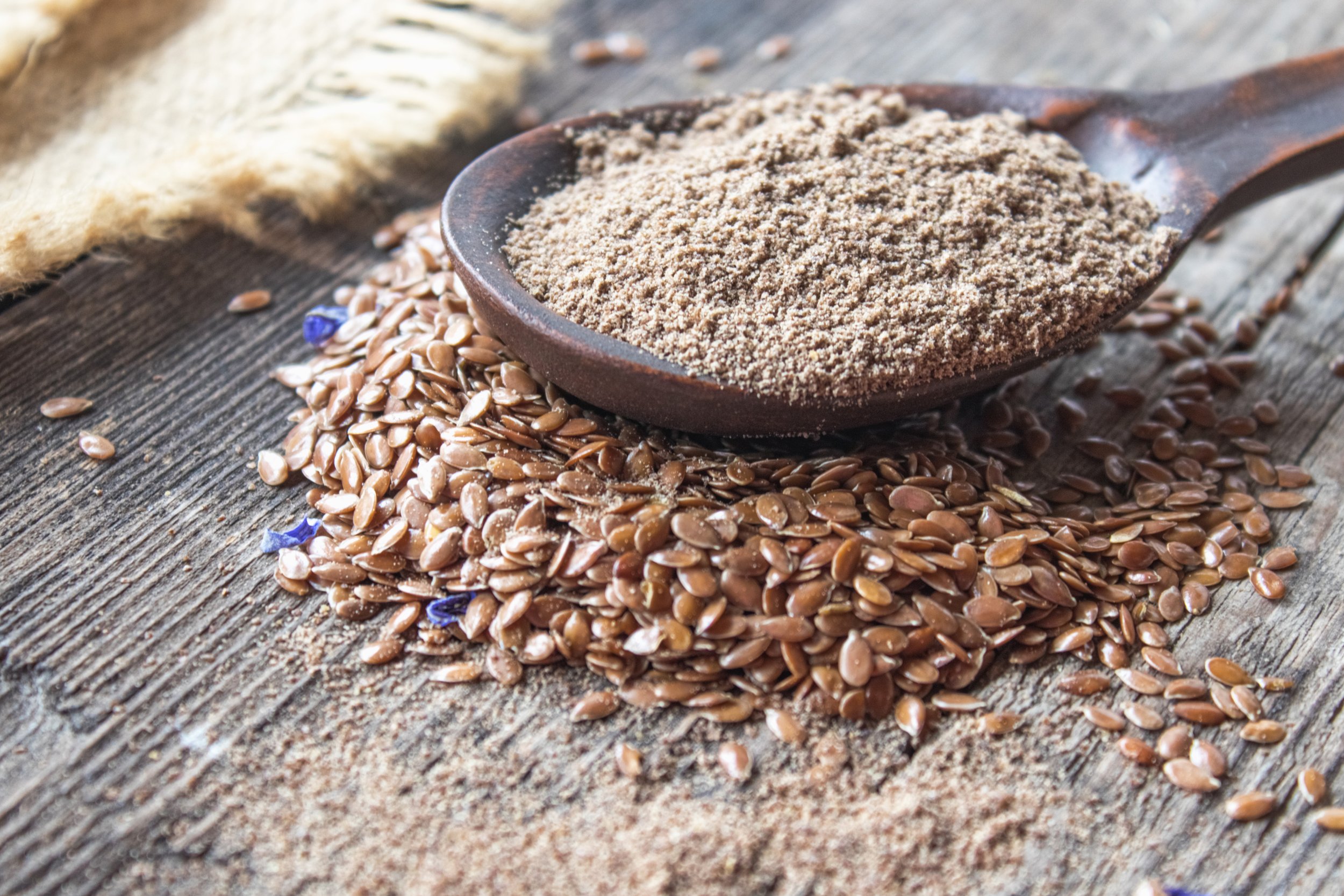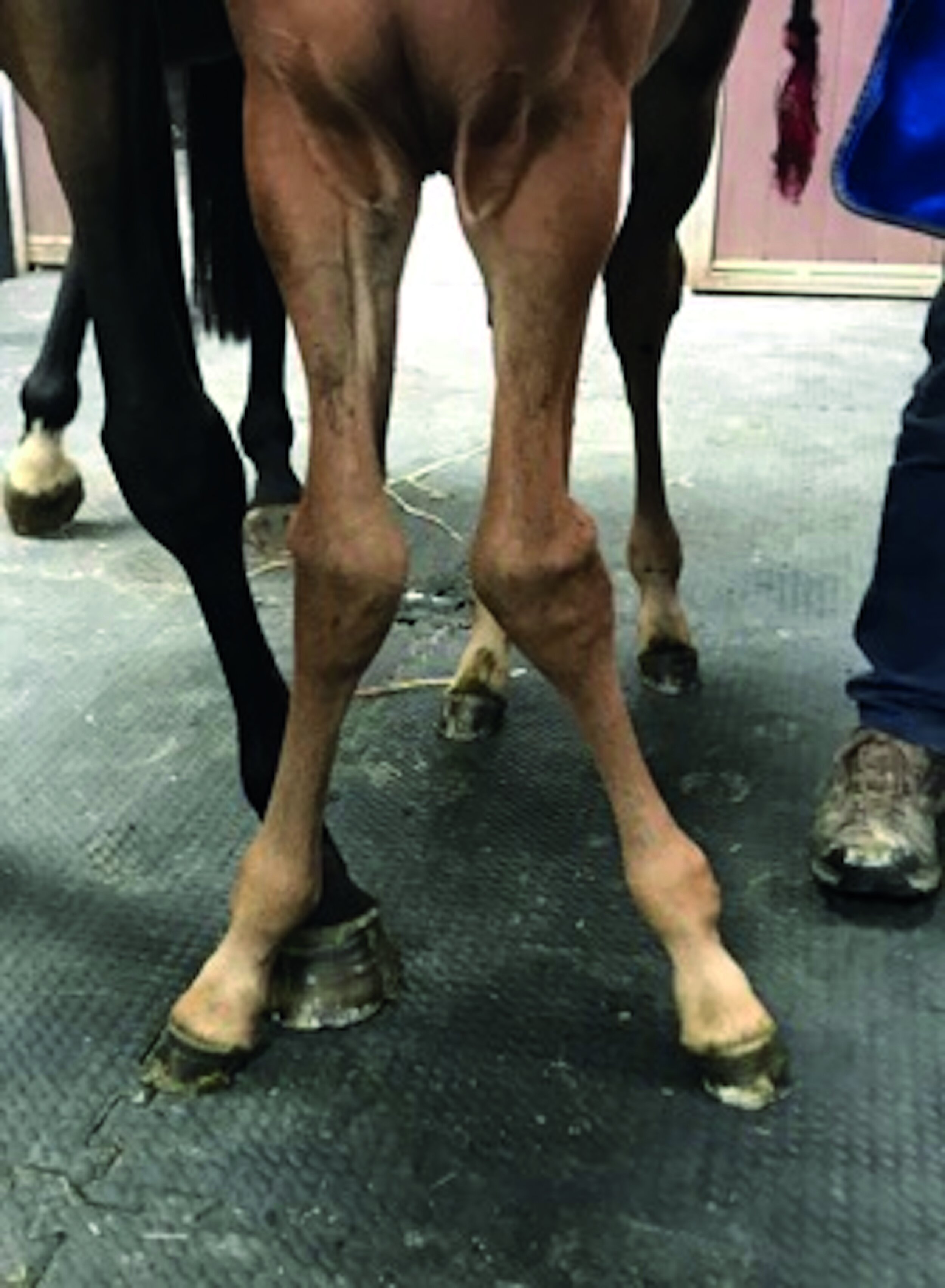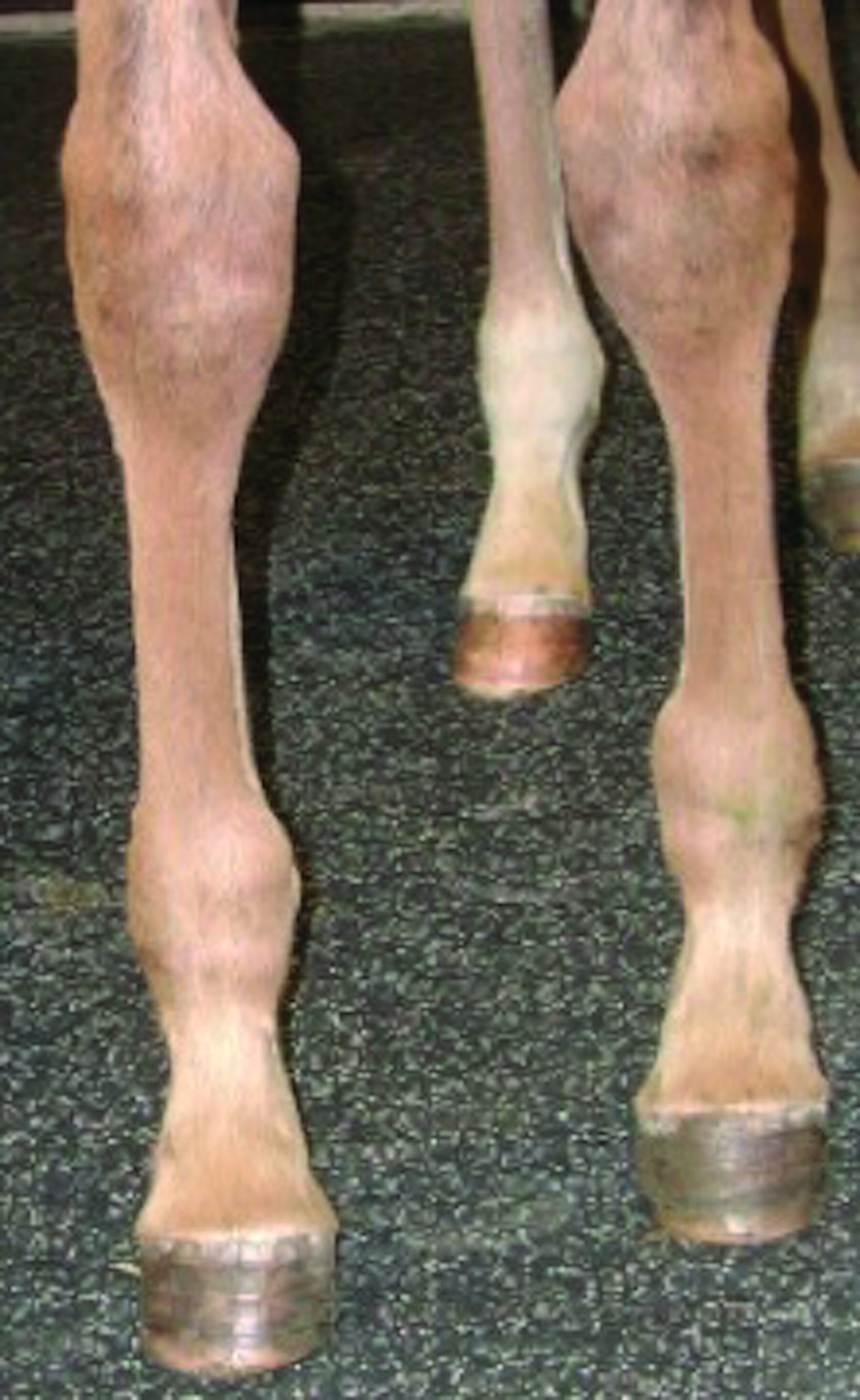Trust Your Gut – the importance of nutrition for health, performance and longevity
/Article by Dr. Richard McCormick, M.V.B., Dip. Eq.Sc., M.R.C.V.S.
The science of equine nutrition is really quite simple – The horse is a flight animal and in the wild, needs to be able to escape from predators using a short burst of energy. Nutrition and subsequent ‘energy’ for survival is all provided by grass which has the required balance of vitamins, minerals, immune supportive nutrients and fiber to maintain a healthy gut microbiota and keep the horse in adequate health for reproduction. Proper functioning of the gastro-intestinal tract (GIT) in horses is dependent on a broad range of micro-organisms and more than half of the energy requirement for their survival comes from the microbial fermentation occurring in their enlarged caecum and colon (Chaucheyras-Durand et al 2022). The bacterial populations resident in the various compartments of the horses intestinal tract vary greatly (Costa et al 2015) and there is more DNA in the bacteria located in the gastro-intestinal tract than there is in the entire body. Because of this, having a healthy gut flora is critical to having a healthy immune system.
In modern times, our demands of horses for performance for our pleasure rather than their survival has led to their need for increased energy that cannot be provided from grass alone. Because of this, the intricacies of diet (in particular the consumption of starch, fiber and fat) has come under scrutiny. Equine feed manufacturers have looked for additional sources of starch, a carbohydrate and a natural component of grass that is ‘essential to provide energy, fiber and a sense of fullness’ (Seitz 2022). Today, most horses and rapidly growing foals are commonly fed diets with >50% of total ration by weight in the form of grain ‘concentrates’ and carbohydrates from oats, maize, soya, barley and wheat. These grain based feeds contain high concentrations of soluble, easily fermentable starches but can be deficient in certain minerals and vitamins so getting an optimally balanced feed ‘right’ is difficult.
Too much of a good thing
With advances in scientific knowledge, we now know that when a horse is exposed to surplus starch, the hydrogen ion concentration of their gut increases promoting the production and absorption of lactic acid, acetate and propionate through the activity of fermentation (Ralston 1994). The process is quick, with lactic acid entering the bloodstream within 3 hours of feeding and calcium subsequently being excreted in the urine. In order to combat this nutrient loss, the horses’ hormone system triggers the release of parathyroid hormone into the bloodstream, activating the release of stored calcium (to maintain optimal blood levels) but unfortunately causing bone demineralisation. Clinically, the horse experiences health consequences of varying degrees including digestive diseases (eg: gastric ulcers, diarrhea, colic or colitis), muscle dysfunction (eg: rhabdomyolysis (known as ‘tying up’), defective bone mineralization (expressed as increased incidence of stress fractures and developmental orthopedic diseases), systemic diseases (such as laminitis, equine metabolic syndrome and obesity (Chaucheyras-Durand et al 2022) as well as potential causes of fatigue.
The ideal equine diet
There is little equine focused research available on the benefits of individual nutrients (due to limited numbers in trials and their subsequent evaluation) of grain ‘concentrates’. But we do know that ingredient availability and quality is regularly influenced by market pressures.
The table (fig 1) below outlines the sugar, starch and fiber components of the various ingredients commonly found in horse feeds. The optimal grain for equine nutrition with its efficient energy source through lower starch content (relative to other grains) and its high level of soluble fiber (relative to other grains) are oats.
The healing power of omegas and short chain fatty acids
While grass provides optimal equine nutrition in its own right, the ‘curing process’ when making hay depletes the valuable omegas 3 and 6 intrinsic in grass. These ‘healing’ nutrients naturally protect the lining of the gastro-intestinal tract by increasing mucous production and alleviating ‘auto digestion’ (via hydrochloric acid). For horses, bacterial fermentation in the hind gut also results in the production of Short Chain Fatty Acids (SCFAs), namely acetic, proprionic and butyric acids. These SCFAs ‘cross talk’ with the gut immune system providing local immunity in the gut as well as protection of the respiratory system, the brain and other tissues against disease. In human medicine, it has been repeatedly established that a dysfunctional gut microbiome is associated with respiratory problems. This is evidenced by the fact that when gut disorders such as Irritable Bowel Syndrome (IBD) or Coeliac disease exist in humans, they are commonly associated with a higher incidence of respiratory infections and related asthmatic like conditions. Barragry (2024) explores the relationship (Fig 2) between gut microbiome and the immune system's ability to support health and combat disease in cattle. A scenario mirrored in the equine.
The stabled horse should be provided with SCFAs daily to support proper functioning gut microbiome. This critical dietary consideration should ideally be provided in the form of flaxseed which has the highest ratio of omegas 3 and 6 (in the ideal ratio 4:1) in the plant world and is most suitable for the equine herbivore.
The health benefits of flaxseed for both humans and equines has been recognized as early as 3,000 BC. Flaxseed was used for various medicinal purposes such as the treatment of gastric disorders, as a soothing balm for inflammation and as a laxative (Judd, 1995). Horsemen (who relied heavily on their equines) and trainers (who sought optimal performance from their charges through natural means) also used flaxseed as a way to supplement the diet with omega-3’s and fiber to produce high quality proteins. Now, thirteen centuries later, we have research to substantiate the knowledge of our ancestors. The renowned German researcher of ‘fats’ and pioneer in human nutrition, Dr. Joanna Budwig, as early as the 1950’s reported that “the absence of highly unsaturated fatty acids causes many vital functions to weaken". Dr. Budwig’s life’s work focused on the dietary ‘imbalance’ between omega-3 and omega-6 fatty acids in humans has been a cornerstone to the exploration of the role of inflammation and the development of many diseases of the coronary, respiratory, metabolic and immune system.
The small seed of the flax plant is also an excellent source of high-quality protein (exceeding that of soybeans and fish oils) and potassium (a mineral that’s important for cell and muscle function). But, the true power of flaxseed lies in three key components:
Omega-3 essential fatty acids – Also known as "good" fats, omegas enhance the oxygen usage of cells and in combination with alpha-linolenic acid (ALA) are anti-inflammatory in their effect within the body.
Lignans – Flaxseed contains 750 - 800 times more lignans than other plant foods (McCann 2007, Yan 2014). Lignans are a group of compounds with antioxidant properties which also contain plant estrogen. Lignans are linked to a reduced risk of developing osteoporosis, heart disease and cancer.
Fiber - Flaxseed contains both the soluble and insoluble types of fiber essential for maintaining ‘gut’ health.
In equines, adding flaxseed to the diet has the immediate benefits of a shiny, healthy coat and fewer skin allergies. Consistent use of flaxseed has multiple long term benefits including strong hoof quality, improved joint health, reduced muscle soreness, faster healing of ulcers (Sonali et al 2008) and significantly impacts inflammation associated with chronic skin conditions (commonly known as ‘sweet itch’). In breeding stock, increased Omega-3 levels in mares’ milk leads to boosted immunity in foals with higher stallion fertility and improved conception rates in broodmares documented (Holmes, 2015).
How diet can influence performance
It is easy to think that ‘providing more is better’ when it comes to using nutrition to support performance. But having excess levels of essential vitamins and minerals being processed by the horses’ sensitive gut has a direct impact on their behavior and willingness to perform. Today, we have greater ‘choice’ at the feed store with a broad range of commercial feeding offerings available including mixes, mashes and supplements but the discerning horse owner can be forgiven for being overwhelmed by the range of diet options for every ailment and stage of life.
In modern times, despite advances in nutrition offerings, we have seen a falloff in performance (Fig 3). During the late 1960s, the U.S. Jockey Club stats noted that racehorses averaged 12 starts per year – a far cry from today's horses racing in the U.S. where the average of 3 ‘starts’ was highlighted by leading US Trainers in 2020 (www.ownerview.com). Unfortunately, this is not just a U.S. based problem, but a phenomenon noted worldwide.
The first equine pelleted feed was formulated in the US by the Cistercian monks in Gethsemani, Kentucky in 1957. Prior to this, all horses were fed ‘straights’ (primarily oats as their energy source and flaxseed as their protein source). My own understanding of the link between modern feeding practices and compromized performance since the 1960s has been curated off an understanding of “what was different” then, as well as a career of observations, clinical practice and scientific review. Fact is, the equine diet of the 1960s was lower in starch and high in fiber. It consisted of oats, minerals, and flaxseed as the “norm”. Hay was the preferred forage (Fig 4).
Today, soya (with one fifth of the omega 3 content of flaxseed) has practically replaced flaxseed as the protein source in equine nutrition. This small change has seen a significant drop in omega-3 and 6 (needed for prostaglandins) in the diet with consequential gastro-intestinal and joint issues. Other dietary changes include those recommended by the National Research Council (NRC) in 1978, who suggested doubling the recommended calcium levels for horses with a subsequent increase in levels of Osteochondrosis (OCD) and Osteopetrosis in the equine population (Krook and Maylin, 1989). Additional moisture in the diet too has led to excess mould formation in convenience feeds and with severe exposure causes liver damage (Buckley et al 2007). Stabled racehorses today mostly lack the nutritional protection afforded a previous generation of horses. The impact has been noted clinically in the widespread increase in equine gastric issues and as stated by J.E. Anthony “Racing fans are missing about half of what they once enjoyed in racing.”
The role of the gut bacteria in the prevention of disease
The gut microbiome begins populating and diversifying from the moment of birth. Though ‘sterile’ in utero, gut derived DNA immediately drives immune health with exposure to nutrition. Recent research suggests that the gut microbiome can be stimulated by using proven probiotics with a track record in enhancing gut health (Barragry 2024). But it is the protective power of SCFAs to allow ‘cross talk’ between the lungs and the gut microbiome that is critical to supporting horses through their life span.
Nutrition using grain ‘concentrates’ is currently at approximately 99% saturation in today’s equine population so a return to feeding ‘straights’ is a swim against the tide of modernity. But, knowing the influence of nutrition on health, performance and longevity it falls on horse owners to be mindful of the consequential impacts such convenience feeds have on the gut microbiome and immune system. Random supplementation and high starch feeds are leading to dietary health issues such as gastric ulcers, hyperinsulinemia and hyperlipaemia (obesity) as well as increased risk of laminitis . So trust your gut and keep it simple – a diet of oats, flaxseed, a multi-vitamin balancer and ad lib hay will not only meet your horses’ energy needs but will keep them happy and healthy too.
REFERENCES
Barragry. TB (2024) WEB https://www.veterinaryirelandjournal.com/focus/254-alternatives-to-antibiotics-probiotics-the-gut-microbiome-and-immunity
Buckley T, Creighton A, Fogarty (2007) U. Analysis of Canadian and Irish forage, oats and commercially available equine concentrate feed for pathogenic fungi and mycotoxins. Ir Vet J. 2007 Apr 1;60(4):231-6. doi: 10.1186/2046-0481-60-4-231. PMID: 21851693; PMCID: PMC3113828.
Budwig, Dr. J (1903-2008) WEB https://www.budwig-stiftung.de/en/dr-johanna-budwig/her-research.html
Chaucheyras-Durand F, Sacy A, Karges K, Apper E (2022). Gastro-Intestinal Microbiota in Equines and Its Role in Health and Disease: The Black Box Opens. Microorganisms. 2022 Dec 19;10(12):2517. doi: 10.3390/microorganisms10122517. PMID: 36557769; PMCID: PMC9783266. https://www.ncbi.nlm.nih.gov/pmc/articles/PMC9783266/
Holmes, R (2015) Feeding for stallion fertility. WEB
https://www.theirishfield.ie/feeding-for-stallion-fertility-172113/
Judd A (1995) Flax - Some historical considerations. Flaxseed and Human Nutrition, S C Cunnane, L U Thompson. AOCS Press, Champaign, IL 1995; 1–10 [Google Scholar]
Martinac, P (2018) What are the benefits of flaxseed lignans? WEB https://healthyeating.sfgate.com/benefits-flaxseed-lignans-8277.html
National Research Council. 1989. Nutrient Requirements of Horses. Washington D.C.: National Academy Press.
Ralston, S VMD, PhD, ACVN (1994) The effect of diet on acid-base status and mineral excretion in horses in the Journal of Equine Practice. Vol 16 No. 7. Dept of Animal Science, Rutgers University, New Brunswick, NJ 08903
Seitz, A (2022) What to know about starch_Medically reviewed by Seitz, A - MS, RD, LDN, Nutrition — WEB https://www.medicalnewstoday.com/articles/what-is-starch#benefits
Sonali Joshi, Sagar Mandawgade, Vinam Mehta and Sadhana Sathaye (2008) Antiulcer Effect of Mammalian Lignan Precursors from Flaxseed, Pharmaceutical Biology, 46:5, 329-332, DOI: 10.1080/13880200801887732













